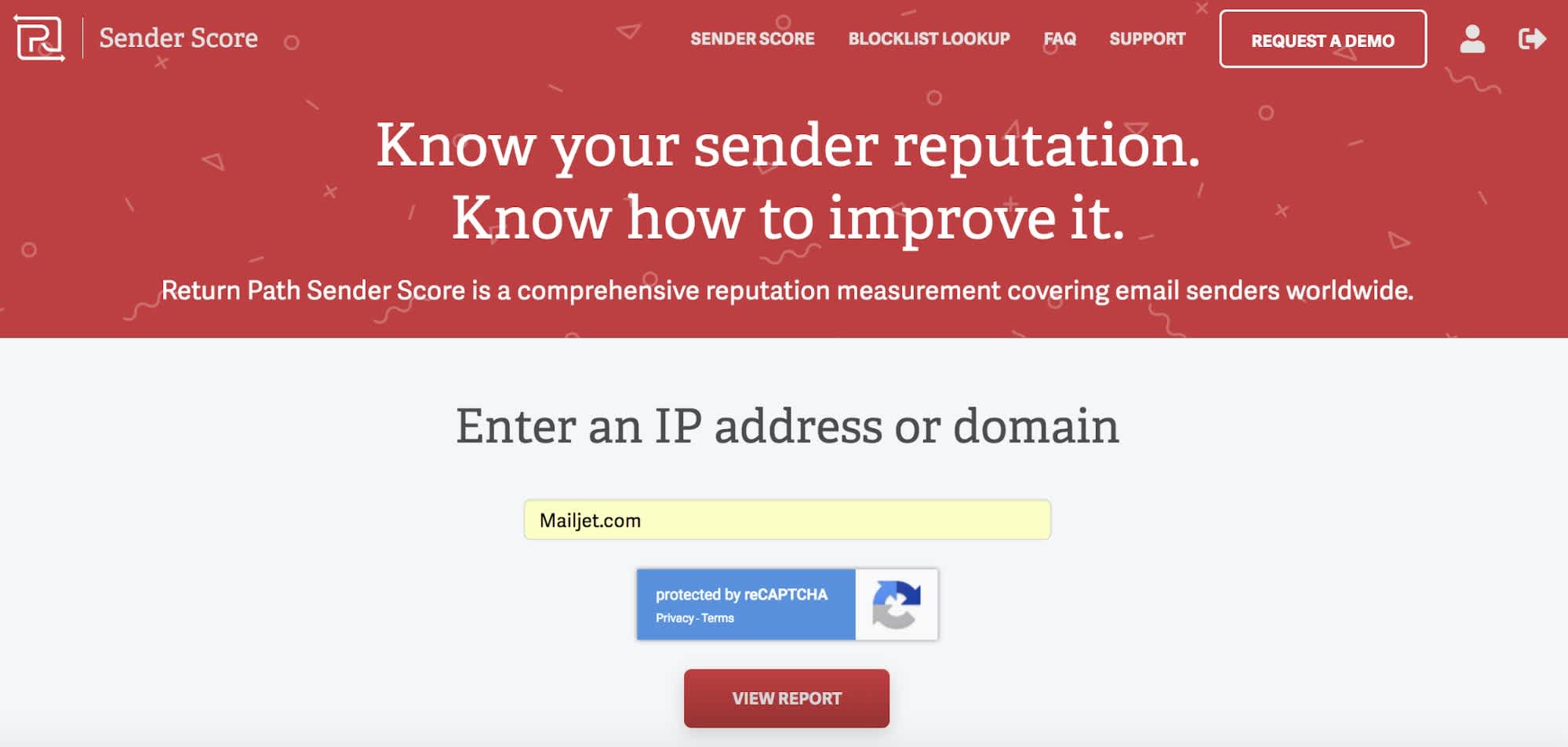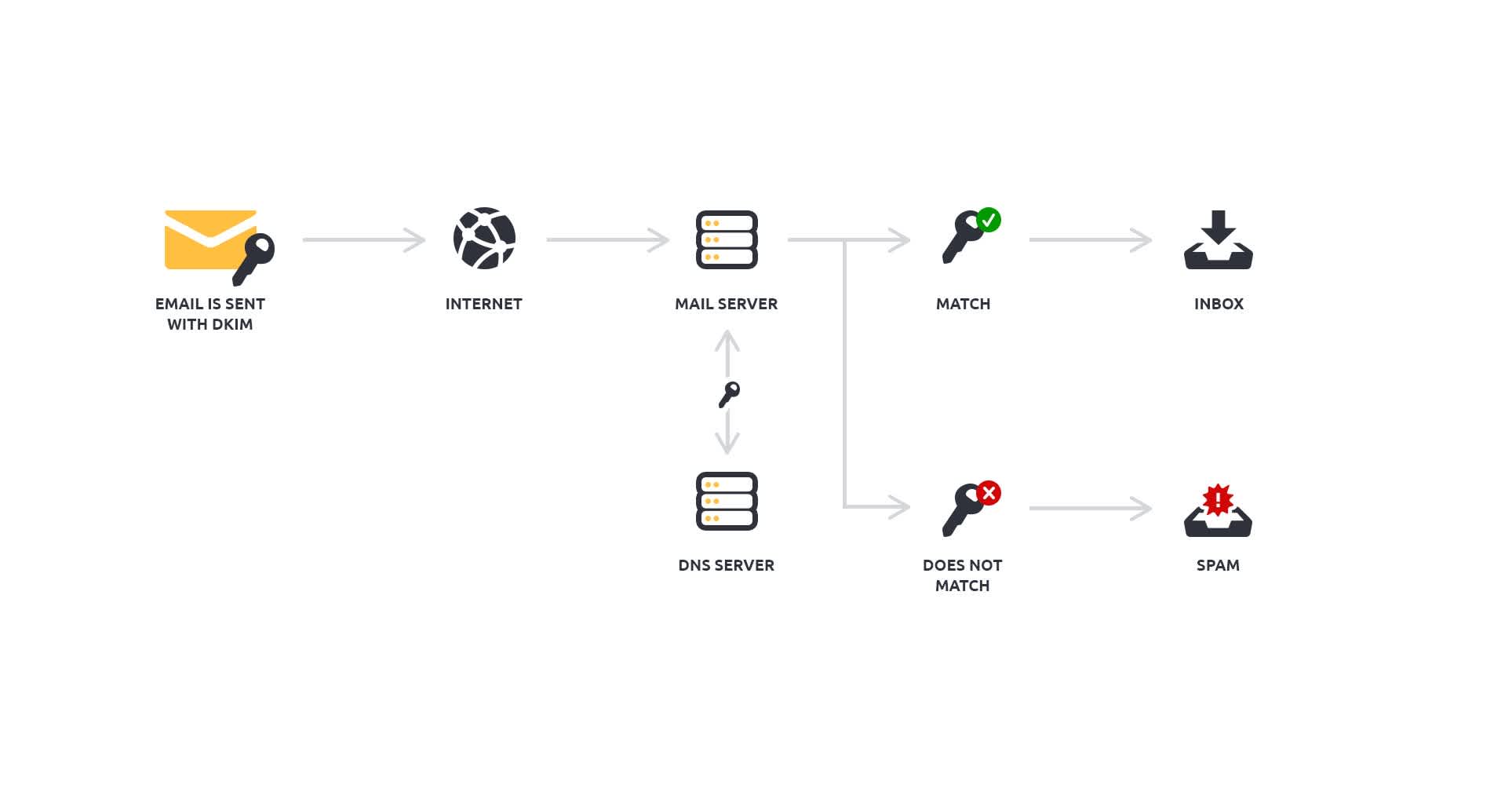Deliverability
Sender Score and email reputation: What are they and how to improve them
Email reputation and Return Path's Sender Score both measure email sending practices - learn how to use them with our guide. Read more...

PUBLISHED ON
Everyone likes good scores, whether they be in sports, video games, or academics. But, did you know that your email campaigns also have a score you can focus on? Sender Score and email reputation are two terms that are very important and relevant to email marketers and deliverability experts.
However, for email novices, it can be difficult to know exactly what these terms mean and how they affect you. We’re here to help - in this article, we will demystify what email sending reputation and Sender Score actually mean and what they each measure.
Table of contents
IP reputation
Content reputation
Domain reputation
Sender Score calculation
Other email reputation indicators
Authenticate your SPF and DKIM
Create sub accounts for your different email needs
Take charge of your engagement data
Segment, A/B test, and personalize
Create a checklist for your email campaigns
Clean your email lists and have double opt-in
Create email campaigns that matter
What is email sending reputation?
Email sending reputation is a complex metric comprising different reputations to determine email delivery practices. The most important reputations are:
IP Reputation
Content Reputation
Domain Reputation
IP reputation
In 1996, as emailing became mainstream, spam began to turn into a serious issue. To counter this, large internet service providers (ISPs) providing email services began to use IP Reputation to analyze email quality. IP Reputation indicates how much users want to get email from a given IP address by measuring bounces, spam or unwanted bulk mail. Back then, there weren’t very robust ways to authenticate a domain address, so ISPs had to create complex IP reputation models that differed from each other, but had the similar task of identifying problematic IP addresses.
After a while, IP reputation alone proved inefficient because it didn’t consider how different IPs could deliver (junk) emails with identical content.
Content reputation
Advances in technology in the 2000s enabled ISPs to develop a new method of measuring the quality of a sender’s emails through content reputation. Content reputation works on a set of criteria that determine the sender’s quality of their email campaign content. While certain types of content are clear triggers for ISPs’ content filters (e.g. attaching a virus, a string of words asking for bank details, and so on), a sender’s content reputation goes down when their emails keep getting low open rates or are flagged, blocked, and unsubscribed.
IP and content reputation work hand in hand to create an overall picture of a sender’s email practices. IP reputation determines the quality of a sender’s email sending through their emailing history. Content reputation analyzes the type of content a sender’s email has and determines if the sender is trustworthy or not.
Domain reputation
As authentication systems have become more robust, ISPs have developed a metric called domain reputation, which measures the quality of a domain’s authenticated emails. Domains and IPs can be different, after all. For example, Mailjet customers could be using shared IPs that we provide and send emails through their domains.
Email sending reputation is a complex metric of other different reputations to determine email delivery practices. It’s developed, essentially, through a constant game of chase-and-catch between hackers who send malicious spam and the ISPs that are constantly creating new ways to catch them in the act.
Great email sending practices do not end with the way you create the content and design of your emails, but they also depend on following strict security protocols that help ISPs identify you as a trustworthy sender. This will become even more important in 2024 if you're emailing contacts with Gmail and Yahoo addresses, following the new requirements these mailbox providers announced in the fall of 2023.
What is Sender Score?
Using a range that starts at 0 and ends at 100, Return Path’s Sender Score is an email reputation score compiled from non-personal data of over 60 million inboxes from different ISPs, spam filtering, and security companies to create a picture of a sender’s email sending practices. Sender Scores are normally calculated on a rolling 30-day average.
Sender Score may be also indicative of a sender’s overall email reputation, but they are not the same. So, if a sender has a high Sender Score, this could indicate that most of the sender’s transactional and marketing emails land in the inbox. But, if a sender has a really low score, then there is a high chance that their email campaigns often have high bounce rates, high block rates and low open rates.
Sender Score calculation
It is important to realize that the Sender Score is ultimately on data that Return Path receives. Ultimately, ISPs decide whether you send good emails or not through their own datasets, not on Return Path’s Sender Score. So, while this score might be a good indication of email sending practices, getting a “high” score does not automatically guarantee that all email campaigns will land in the inbox.
The best way to fix email sending is to look at the source and focus on deliverability (the rate at which a sender’s email campaigns land into the inbox, as opposed to the spam folder), because this is what the Sender Score ultimately attempts to quantify.
How to check your Sender Score
Checking Return Path’s Sender Score is quite easy. Follow these steps:
1. Go to https://www.senderscore.org/
2. Register and create an account using your professional email.
3. You should receive this confirmation email. Click on the CTA Activate Your Account.

Activate your Sender Score
4. As soon as you log in, you should be redirected to this page.

Know your Sender Score
5. Here, you can look at the Sender Score of either an IP address, or a domain (e.g. mailjet.com).

Mailjet’s Sender Score
6. Searching by domain name leads you to a page listing IPs sending mail from this domain, an indication of their email sending volume, and, finally, their Sender Score.
These scores could indicate whether this domain has been sending good emails or spammy ones in the rolling 30 days prior to your search.
What is a good Sender Score?
According to Return Path, their Sender Score reveals important data on the following:
Complaint rate - the rate at which users complain about your emails as junk.
Unknown user rate - the number of invalid users in your subscription lists.
Spam traps triggered - spam traps are email addresses that don’t belong to anyone and have the primary task of catching spammers and senders with poor list hygiene practices.
Pristine spam traps are email accounts never owned by anyone and have been created to catch bad senders. Recycled spam traps are abandoned email accounts that have been recycled into spam traps.
As such, domains with Sender Scores of 90 and above have below a 1% complaint rate, ~1% unknown user rate and an average of 0.36% spam trap hits. Conversely, those with very poor Sender Scores of 10 or below had a 7.4% complaint rate, 7% unknown user rate and an average of 7.53% spam trap hits.
Having a good Sender Score and having emails sent to the inbox is good for the business, but it’s not the end-all, be-all to great email sending.
When Sender Score needs backup
A high Sender Score does not mean an end to your email worries. Like any other aggregate, Sender Score misses out on other very important factors that influence overall email sending. After all, this proprietary system comes from Return Path and not from ISPs. ISPs may have slightly different ways of measuring your email reputation and include other variables that determine whether your campaign should be sent or not.
Return Path suggests: "A high Sender Score on its own doesn’t translate to higher inbox placement rates. Subscriber engagement, a mailbox provider’s own reputation calculations, and the content in the incoming message—none of which are included in Sender Score calculations—all factor into each mailbox provider’s final filtering determinations."
Email deliverability experts agree on this, including Word to the Wise founder Laura Atkins:
“Basically, just because you have a great SenderScore doesn’t mean you’re going to have good delivery. Likewise, having a poor SenderScore doesn’t mean your mail is destined to be undelivered.”
Laura Atkins, Founder at Word to the Wise
Sender Score is not the end-all be-all to determining if your email campaigns are great in all areas. Ultimately, the Sender Score does not measure content creativity, which is crucial to creating email campaigns with high open rates.
Therefore, it is best to focus on your deliverability, as this is the best indicator of whether your emails get delivered to the inbox and not to the spam folder.
Other email reputation indicators
It is also a good idea to invest in other email reputation indicators that might be better suited to your email sending. An email marketer in this Medium article, for example, pointed out areas ignored by the Sender Score. Some 90+ scores scored low on Google Postmasters, which analyzes and measures email sending practices loosely based on Gmail’s complex filtration system. Therefore, Google Postmaster Tools may be a great alternative for you if most emails in your lists are Gmail users, but less so if they are from other ISPs.
In fact, it’s best to understand that ISPs might not only measure email reputation differently, but they might also have different acceptable standards for various metrics altogether. This is the main reason why, for example, an email campaign might get great deliverability results for Gmail, with most emails landing into their inboxes, but less stellar results in Outlook.
In any case, ISPs have different filtration systems and they modify them often in order to get a step above malicious spammers. If every ISP filter worked the same, then each one would be easy to hack. So, really, the best way to improve your email sending is to simply improve your email sending practices. Sometimes, the best changes are the most obvious ones.
How to improve your Sender Score and email reputation
As discussed, sender reputation comprises of other reputations based on your email sending:
IP reputation is tallied by how much people want to see emails from this IP address.
Content reputation measures how good or spammy your email content consistently is.
Domain reputation checks the email sending from your domain as a whole, validated through authentication methods.
It becomes a matter of ensuring that your sending practices are great across the board. Below, we have compiled a guide to ensure that you are sending emails in the best possible way.
Authenticate your SPF and DKIM
Authenticating your account ensures that only a specific list of IPs can send emails using your domain. This keeps spammers from falsely delivering emails through your domain.
Think of DKIM as the signature you include in every email campaign. The DKIM is a powerful proof that the recipient’s ISP can use to check if the emails they have received are domain-authenticated and valid. So, if the signature matches, then the email goes into the inbox - all other things equal. If it does not match, then it’ll go into the spam folder (or get a hard bounce).

DKIM Process
SPF, meanwhile, is a list of the authenticated IP addresses within that domain. DKIM and SPF work together to ensure that you do not become the victim of a spoofing attack (i.e., when a sender masquerades as another domain to send spam).
Read more:
Create sub accounts for your different email needs
Separating your marketing and your transactional emails by creating sub-accounts is good for organizing different types of email sending. By separating these two types of emails, marketers can better keep track of various metrics, such as:
Scheduled sending of marketing emails
How often users trigger transactional emails
Different types of transactional emails being triggered
Different types of marketing emails being sent
Separating both also ensures that deliverability rate issues on marketing emails do not get passed on towards transactional emails and vice-versa.
Imagine if marketers had their transactional ticket confirmation emails go to the spam folder because an ISP's filtering system identified the sender as a spammer through their marketing emails. This could get email marketers and their companies in a whole lot of trouble.

Deliverability Matters
Read More:
Take charge of your engagement data
Email engagement is comprised of data on how engaged your users are with your email campaigns. These include:
Open rates - the rate of users opening email campaigns.
Click rates - the rate of users clicking on links and CTAs within these campaigns.
Complaint rates - the rate of users complaining about receiving specific email campaigns.
Engagement time - the amount of time they spend on reading specific email campaigns.
Unsubscribe rate - the rate at which users unsubscribe after receiving your email campaigns.

Mailjet Dashboard
The image above shows some of these metrics in action on Mailjet's dashboard. But, of course, these stats can take a long time and creative effort to improve. Sending emails with great engagement rates can’t be done overnight. After all, brand loyalty can only be fully nurtured above and beyond email marketing.
Senders can already tweak some things, such as making emails more responsive, and getting some email content and design inspirations online. Users prefer to engage with beautifully-designed emails as opposed to suspicious plain text ones. Other than design, of course, the frequency and time of email campaigns also matter for engagement. ISPs consider engagement rate very highly in their content filtering algorithms.
Read more:
Segment, A/B test, and personalize
Segmentation involves dividing your email contact lists based on a set of criteria. Each segment can be, for example, based on region, gender, or interests, among others. A/B Testing is when marketers send multiple versions of the same campaign and analyze which one(s) perform the best. These techniques can allow marketers to create more specific and personalized email campaigns that users will want to open.
Of course, A/B testing, segmentation and personalization are all related to improving on email engagement rate.

A/B Testing Dashboard
Above are some A/B testing stats on our dashboard. Version A has:
The best open rate and click rate
The highest click rate
The lowest unsubscribed rate
The least amount of soft and hard bounces
These indicate that Version A is the winning version, and that it is an email that people want to open and engage with. So, you can use this information for future campaigns, or if you had only tested with a small sample size, you can automatically send this email to the remainder of your list.
Create a checklist for your email campaigns
A best practices checklist for all your email campaigns is like an accountability log to the senders themselves right before they send their email campaigns. A checklist allows them to make sure that they have not forgotten about anything before sending their email campaigns.
With tactics in improving engagement rate and having enabled authentication systems to securely send email campaigns, the last thing marketers can do before they send their email campaigns is to run them through a checklist that should include
A good subject line
A pre-header
Whether they have checked all links are accurate and include UTM tags if necessary
Proofreading
Good CTAs
Proofreading
Proofread once more - remember, there's no undo button!
Now, this checklist can be automated with a tool that runs through emails campaigns to ensure that they are ready for delivery. But this checklist does not have to be automated, as senders can also check through manually. Things that you can check include:
Clean your email lists and have double opt-in
Regularly cleaning your contact lists prevents marketers from sending emails to inactive users, some of which might have been converted into spam traps. Additionally, clean lists also have more engaged users, especially when they are well-segmented.
One of our customers, Product Hunt has a great way of cleaning their subscription lists. For inactive users (i.e have not opened Product Hunt newsletters in a while) they send an email (shown below) stating that they have been automatically removed from the list.

Users tend to respond positively to these communications, as shown in the tweet below.
Read more:
Create email campaigns that matter
Of course, the most important thing that you can do in your email marketing is to create a strategy that includes processes, workflows, tactics, database of email campaigns, and so on. Devising an email marketing strategy means that you have a solid idea of what to do through the course of your marketing projects.
However, an email strategy is not something that’s rigid and bureaucratic. A great email marketing strategy - like any other marketing strategy - allows marketers to experiment throughout the project, in order to adapt to new trends and key moments that suddenly open unexpectedly.
Read more:
Wrapping up
Sender Score and email reputation are ways to measure a sender’s email sending practices, and to find places where you can improve your email campaigns and get the results you want, but it's not the end-all be-all of email health and efficiency.
At Mailjet, we've moved away from Sender Score as we've found that it isn't the most helpful way of helping our clients maintain a great email deliverability. There are many elements that play a key role in the health of your email reputation and it's important to look at the overall health of your email strategy rather than focus on just one indicator.
Ultimately, the path to getting into the inbox is on improving deliverability and giving your readers what they need and want. But, if you’re focused on high scores, you can always stop by the arcade. We’ll challenge you to a game of Space Invaders.
*** This is a revamped version of the blog post "Sender Score and Email Reputation: What Are They and How to Improve Them" written by Julian Canlas for the Mailjet blog.








